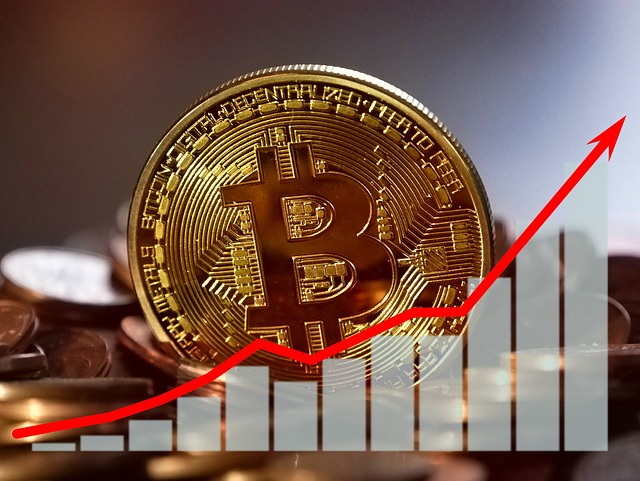The beginner’s guide to reading cryptocurrency price charts

Trading cryptocurrencies requires an understanding of cryptocurrency price charts. The Technical Analysis (TA) accompanying these charts may be difficult to understand for newcomers.
This guide aims to help you understand what candlestick charts are, what makes a live BTC price chart, and what technical analysis we can apply to them.
Candlestick charts: how to read them?
Candlestick charts give you all the info you need to trade crypto. Using such charts, you can do technical analysis and speculate on entry and exit points. The shapes and patterns of candlestick charts can help predict future market trends.
Candlesticks: what are they?
First, look at what you can see from the candlestick charts themselves.
Short answer – The candlestick shows an asset’s high, low, and opening price over a short period, usually a day. Candlesticks are plot points on price charts that can tell you a lot about an asset. It has a body and wicks, which are called “shadows.”
Candlestick bodies:
In general, candlesticks display assets’ opening and closing prices each day. ● Opening Price: An asset’s price when it starts trading on the exchange. ● Closing Price: An asset’s final price after an exchange closes.
Bearish and Bullish Indicators:
Generally speaking, there are two types of candlesticks – bullish and bearish. ● The top of a bullish candle (green) shows the closing price, and the bottom shows the opening price. ● Bearish candlesticks show prices falling. The top of a candle shows the opening price, and the bottom shows the closing price.
Candle wicks (shadows):
A shadow, or “wick,” shows how assets’ prices fluctuate about their daily opening and closing prices. ● High Price: An asset’s everyday average price. ● Low Price: A day’s lowest price for an asset.
What’s on a candlestick price chart?
The next element on a candlestick chart is a summary of what candlesticks can show us.
Pick a time
Crypto candlestick charts let you select the timeframe that suits your needs. There are 1 hour, 6 hours, daily, weekly, monthly, or even all-time options, and you can zoom in to see price changes within 15 minutes.
Crypto chart timeframes
Analysts use technical tools to analyze crypto charts and consider timeframes. They typically look at: ● 15-minute chart ● Hourly chart ● 4-hour chart ● Daily chart
The time frame of any trader depends on their trading style. There are two kinds of traders.
Intra-day traders
Most intraday traders open and close their positions on the same day. They like short time frames, such as hourly, 15-minute, and 5-minute charts.
Long-term traders
Long-term investors hold positions for weeks, months, or years. They prefer hourly, 4-hour, daily, or weekly charts. Intraday traders cannot benefit from short time frames.
The volume
A cryptocurrency trading chart will always show the volume and how much cryptocurrency was traded during the selected period. Green volume bars indicate increased interest and selling pressure in cryptocurrency, while red bars indicate decreased interest and selling pressure.
What is technical analysis?
The basic idea behind technical analysis is to predict the prices of cryptocurrencies or stocks using technical indicators.
Technical candlestick charts
A price chart can show patterns and potential movement, as well as the prices of assets. You can use moving averages and support and resistance levels.
Technical indicators: what are they?
An asset’s price is forecasted using price charts using its history and external factors, such as macroeconomic policies and news.
1. Resistance and support levels It is beneficial to identify support and resistance levels on cryptocurrency charts. These levels are the ones that indicate a trend reversal. Generally, it is recommended to purchase at support levels and sell at resistance levels.
The support and resistance levels are getting much attention.
2. The moving average Moving averages are generally calculated by averaging daily price changes over time and moving across price charts. However, moving averages do not take into account short-term fluctuations in price.
3. Capitalization (market cap) Generally, a coin’s market cap is determined by the number of coins in supply and its price, which is an excellent indicator of a coin’s stability.
It’s still critical to take note of these factors, even when they don’t always appear on the chart. To calculate the market cap of a coin, use the following formula:
Coin Price x Total Circulating Supply = Market Cap
Do you want to get started trading crypto? We understand if this information and terminology are overwhelming.
Market emotions: A not-so-technical indicator
Participants in the market also play a role in crypto prices by showing fear, greed, optimism, or pessimism. The price falls below support because traders are greedy or optimistic. Due to herd mentality, the price has risen well beyond the support line. As the price rises, fear and pessimism set in. Due to this, traders start selling their assets to avoid losing money.
Technical understanding analysis helps you succeed in the long run. We recommend taking a reserved approach when you start. Prices will always go up and down, and there will always be market positions, so don’t feel obligated to jump in immediately.
ADVT.

